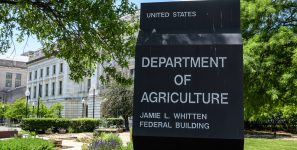Major Freight Infrastructure Investments Set to Generate $10 Billion Economic Boost for St. Louis Region
Investment in infrastructure is critical to sustaining a prosperous region and ensuring efficient freight movement across the St. Louis area, the nation, and globally. Evidence shows that every dollar spent on transportation infrastructure yields a $4 return in economic development. This multiplier effect and the importance of unified regional advocacy for priority project funding were key themes at the annual Freight Summit hosted by the St. Louis Regional Freightway on May 15, part of FreightWeekSTL 2024.
Read also: St. Louis Region Poised to Thrive Amid Global Supply Chain Disruptions
Infrastructure as a Catalyst for Economic Growth
Shayne Gill, Program Director for Multimodal Transportation at the American Association of State Highway and Transportation Officials (AASHTO), emphasized St. Louis’s strategic importance in freight transportation. “St. Louis serves as a crucial hub for multimodal freight connections, enhancing its economic growth potential,” said Gill. He highlighted the collaborative efforts led by the St. Louis Regional Freightway that are advancing significant projects, such as the $2.8 billion new terminal at St. Louis Lambert International Airport, ongoing improvements on Interstate 270, and the replacement of key freight rail bridges over the Mississippi River.
Leveraging Federal Funding
Gill noted the region’s effective use of newly available federal funds, enabling faster advancement of critical infrastructure projects. He also discussed the transformative impact of the Infrastructure Investment and Jobs Act (IIJA) and advocated for maintaining these “historic” funding levels to counteract inflation and rising construction costs.
Economic Impact of Infrastructure Projects
With the St. Louis region’s Priority Projects List including nearly $2.3 billion in funded projects, the anticipated economic impact is close to $10 billion. Overall, the 27 projects on the list, totaling over $8 billion, are expected to generate $24 billion in economic benefits for the bi-state region. Gill stressed the importance of showcasing the broader economic benefits of these projects, including job creation and reduced commuting times, which enhance community well-being and attract businesses.
Future Infrastructure Funding and Workforce Development
Gill advocated for more predictable funding through formula programs and significant discretionary grants for large-scale projects like I-270. He also addressed the impact of recent trends, such as low river levels and pandemic-induced shifts in freight dynamics, underscoring the essential role of public transportation in maintaining supply chain stability.
Building Public Support
In the Q&A session, Gill highlighted the need to educate the public on the daily benefits of transportation infrastructure. He urged professionals to share personal stories illustrating how infrastructure improvements enhance quality of life, thereby fostering public support for continued investment.
Workforce Development Needs
Mary Lamie, Executive Vice President of Multimodal Enterprises for Bi-State Development, moderated the discussion and shared insights on workforce challenges, such as shift overlaps due to transportation delays. Gill emphasized the need to engage youth with the evolving transportation sector’s exciting opportunities to ensure a skilled workforce capable of leveraging infrastructure investments effectively.
By focusing on infrastructure investment as a driver of economic growth and advocating for sustained funding, the St. Louis region is poised to achieve significant economic benefits and enhanced quality of life for its residents.





Leave a Reply